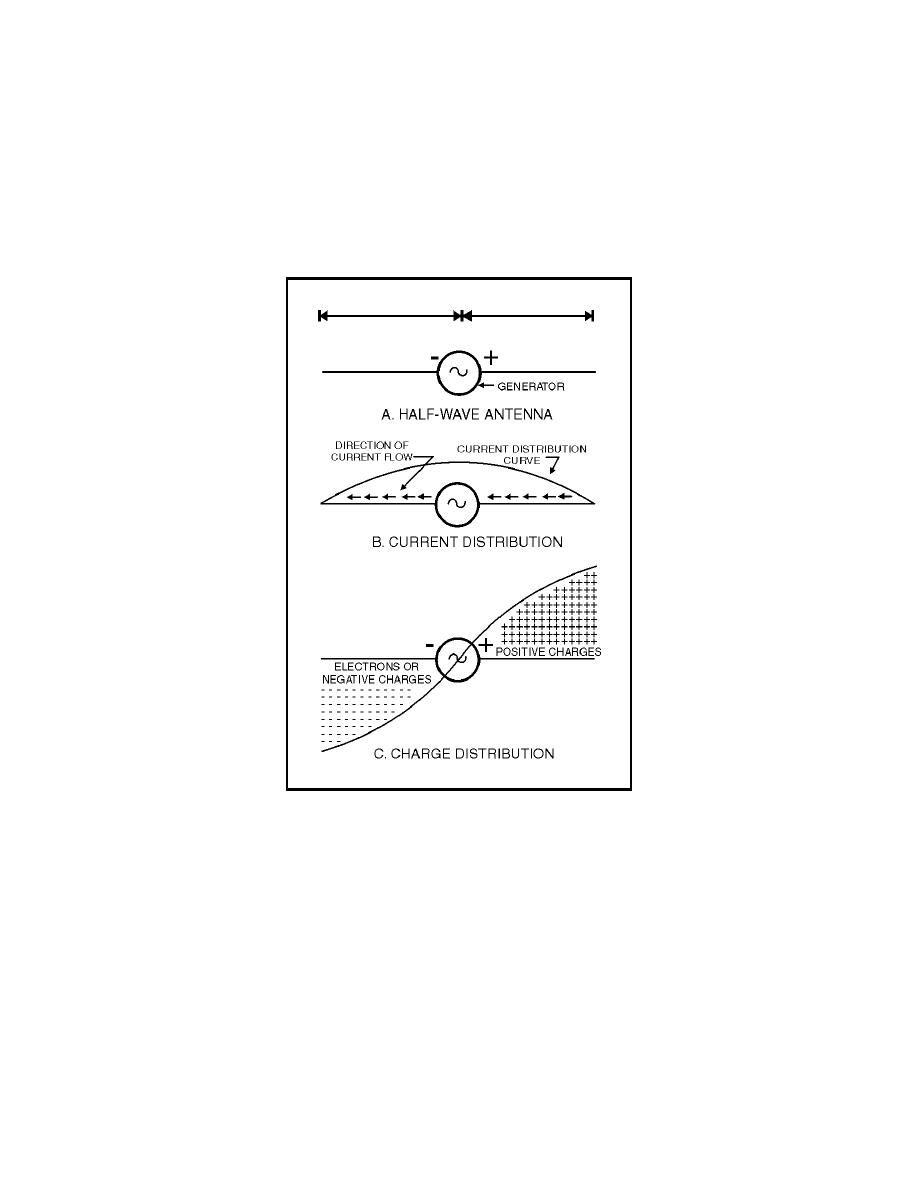
_______________________________________________________________________ Antennas
fields say nothing about a conductor. Therefore, these laws hold true whether
a conductor is present or not.
4-22. Figure 4-5 shows the current and voltage distribution on a half-wave
(hertz) antenna. In figure 4-5, view A, a piece of wire is cut in half and
attached to the terminals of a high-frequency AC generator. The frequency of
the generator is set so that each half of the wire is one-quarter wavelength of
the output. The result is a common type of antenna known as a dipole.
Figure 4-5. Current and Voltage Distribution on a Antenna
4-23. At a given time, the right side of the generator is positive and the left
side negative. Remember that like charges repel. Because of this, electrons
will flow away from the negative terminal as far as possible, but will be
attracted to the positive terminal. Figure 4-5, view B shows the direction and
distribution of electron flow. The distribution curve shows that most current
flows in the center and none flows at the ends. The current distribution over
the antenna will always be the same no matter how much or how little
current is flowing. However, current at any given point on the antenna will
vary directly with the amount of voltage developed by the generator.
4-24. One-quarter cycle after electrons have begun to flow, the generator will
develop its maximum voltage and the current will decrease to 0. At that time
the condition shown in figure 4-5 view C will exist. No current will be flowing,
4-7



 Previous Page
Previous Page
